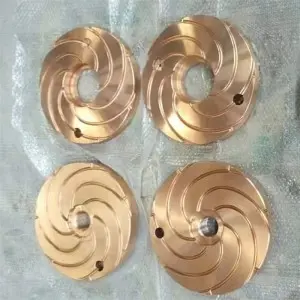Feeders are critical components in a variety of industrial applications, especially in mining and manufacturing. One of the important components of the feeder is the eccentric shaft, which plays a key role in controlling material flow. However, the keyways of eccentric shafts often suffer from severe wear, leading to inefficient operation and potential equipment failure. This article takes an in-depth look at the causes of eccentric shaft keyway damage and outlines effective ways to mitigate these problems.
Cause of damage
Material fatigue: The eccentric shaft is subjected to continuous cyclic loads during operation, which will cause material fatigue over time. This fatigue can cause micro-cracks in the keyway, ultimately leading to severe damage.
Misalignment: Proper alignment of the feeder assembly is critical for optimal performance. Misalignment between the motor andeccentric shaft can cause uneven load distribution, resulting in excessive stress on the keyway. This misalignment can be caused by improper installation or wear and tear on other components.
Vibration: Excessive vibration is another common cause of keyway damage. Vibration can be caused by unbalanced loads, worn bearings, or other mechanical problems. These vibrations can cause keys to loosen and lead to keyway wear.
Insufficient Lubrication: The keyway and its associated components require proper lubrication to minimize friction and wear. Insufficient lubrication can lead to increased friction, overheating and accelerated keyway wear.
Material Selection: The selection of eccentric shaft and keyway materials is crucial. The use of materials unsuitable for operating conditions may result in premature wear and failure. For example, softer materials may wear out quickly under high stress conditions.

Treatment measures
Regular Maintenance and Inspections: Implementing a routine maintenance schedule can help catch potential problems before they escalate. Regular inspection of the eccentric shaft and keyway can reveal signs of wear, misalignment, or other problems that need to be addressed.
Alignment Check: It is critical to ensure that the feeder assembly is properly aligned. Regular alignment checks help prevent uneven load distribution and reduce the risk of keyway damage. If misalignment is found, corrective measures should be taken immediately.
Vibration Analysis: Conducting a vibration analysis can help identify the source of excessive vibration. By addressing the root cause, whether it’s a load imbalance or worn components, operators can significantly reduce the risk of keyway damage.
Improve Lubrication Practices: Establishing a strong lubrication mechanism is critical to the longevity of the keyway. This includes choosing the right type of lubricant and ensuring it is used at appropriate intervals to minimize friction and wear.
Material Upgrade: If you find that the current material for the eccentric shaft and keyway is insufficient, consider upgrading to a higher grade of material that can withstand the operating stresses. This can significantly improve the feeder’s durability and performance.
Keyway Repair Techniques: When damage occurs, various repair techniques can be used. These may include welding, machining or using keyway inserts to restore the integrity of the keyway.
In summary
The keyway of the eccentric shaft in the feeder is susceptible to various forms of damage due to operating stress. By understanding the causes of this damage and implementing effective treatment measures, operators can improve feeder reliability and efficiency. Regular maintenance, proper alignment, vibration analysis, improved lubrication practices and material upgrades are important strategies to mitigate damage and extend equipment life.
Post time: Nov-08-2024
